Practical Solutions for Black Mold Removal at Home
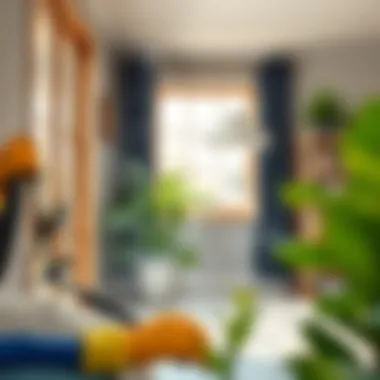
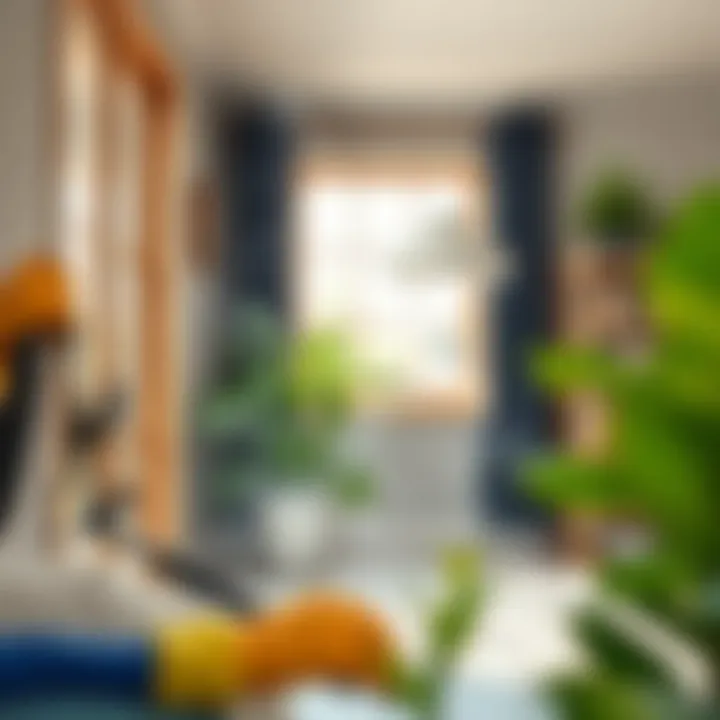
Intro
Black mold can often seem like a creeping menace within our homes, manifesting in corners, basements, and damp areas, where it thrives in moisture-laden environments. Understanding black mold is pivotal, not just for aesthetics but also for health; it can pose serious risks to those exposed to it, especially children and those with respiratory issues. This narrative offers homeowners a variety of practical strategies to combat mold infestations effectively.
From cleaning solutions and preventative measures to maintenance practices that keep mold at bay, this guide equips readers with the information they need to create cleaner and safer living spaces. By grasping the intricacies of mold growth dynamics, homeowners can take informed steps towards a healthier environment, fostering peace of mind in their own homes.
The following sections will delve into effective solutions, addressing specific spray solutions, their efficacy, and the precautions necessary for safe usage. Additionally, we're set to explore the maintenance of a home through seasonal checklists and organization tips, ultimately assisting homeowners in developing comprehensive strategies to ward off this unwelcome intruder.
Understanding Black Mold
Understanding black mold is crucial for any homeowner who wishes to maintain a healthy living environment. This fungi can thrive in the shadows of our homes, often without being noticed until it becomes a significant problem. By grasping the nature of black mold, its health implications, and typical growth areas, individuals can take proactive steps to ensure their spaces remain mold-free.
Defining Black Mold
Black mold, scientifically known as Stachybotrys chartarum, is a type of fungus that appears in dark green or black patches. Unlike other molds, it thrives in damp conditions, often appearing in places that are consistently moist. It's often mistaken for other types of mold due to its color, but its unique properties and health risks set it apart. Knowing exactly what this mold is helps homeowners recognize it when they see it and understand why it poses a risk to their health and property.
Health Risks Associated with Black Mold
The health risks linked to black mold cannot be swept under the rug. Exposure to this mold can lead to a host of health issues, particularly for individuals with respiratory conditions, allergies, or weakened immune systems. Symptoms may vary from minor irritations, such as sneezing and skin rashes, to more severe conditions like chronic coughing, difficulty breathing, and even neurological issues in very high exposure situations.
"Even if you're healthy, mold exposure can lead to headaches, memory problems, and fatigue. It's not just an 'odor issue'; it's about protecting your wellbeing."
Thus, understanding these risks is a major part of addressing and preventing black mold growth in your home.
Common Places for Mold Growth
Black mold doesn't make its presence known in random places. There are specific areas in a home where mold tends to gather, usually where moisture is prevalent. Some common locations include:
- Bathrooms: Showers and tubs can accumulate moisture, providing a welcome environment for mold.
- Kitchens: Leaky pipes or spills are frequent culprits.
- Basements: Often damp and less ventilated, these spaces provide the perfect breeding ground for mold.
- Attics: Poor insulation and ventilation can trap moisture in these spaces.
- Around Windows: Condensation can form around window frames, encouraging mold growth.
Identifying these key growth areas early can prevent larger infestations down the line. The more informed you are about the risks and locations associated with black mold, the better equipped you’ll be to combat it and maintain a clean living space.
Identifying Mold Infestations
To effectively tackle black mold issues, one must first recognize the signs that indicate its presence. Identifying mold infestations is crucial in curbing potential health risks and property damage. You see, catching mold early is half the battle won. Left unchecked, these pollutants can wreak havoc on homes and even the health of individuals living within them.
Being able to spot mold quickly involves knowing where to look and what signs to be vigilant for. Moreover, understanding these signs leads to prompt action, which can save homeowners time and money down the line.
Signs of Mold Presence
There are a few indicators that can signal the unwelcome presence of mold. Keep an eye out for:
- Visible Growth: This might sound obvious, but mold often appears as black, green, or white spots on walls, ceilings, and sometimes even furniture.
- Musty Odors: If you catch a whiff of something akin to damp socks or rotting wood, that’s typically mold’s way of making itself known.
- Water Damage: Look for signs of water leaks or stains. If you’ve had recent plumbing issues or stagnant water, consider it a red flag.
- Allergic Reactions: Increased sneezing, red eyes, or skin irritations among residents can indicate mold sensitivity.
This list isn’t exhaustive, but it does cover the most common tell-tale signs. Remember, the sooner you spot mold, the easier it may be to eliminate.
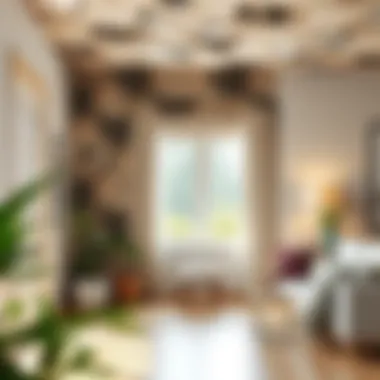
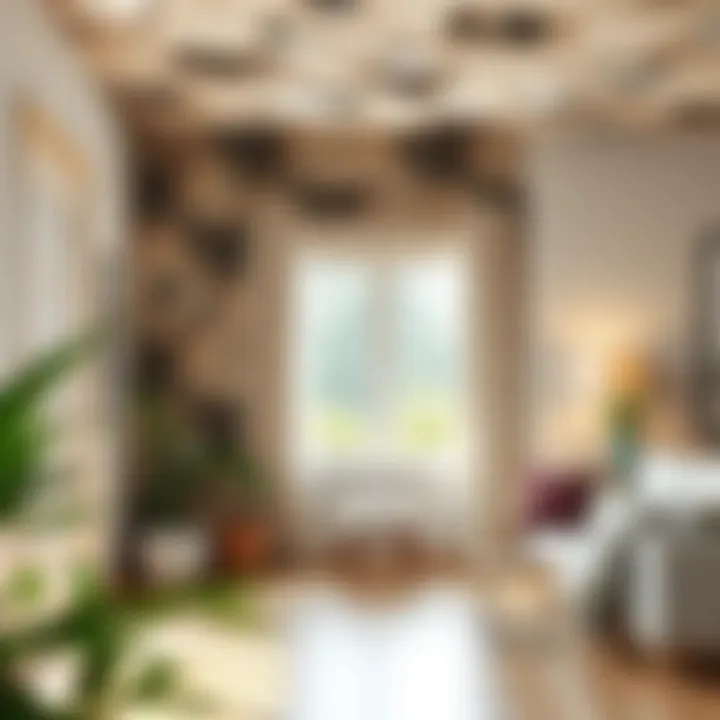
Conducting a Mold Inspection
If you suspect mold but can’t locate it, conducting a thorough mold inspection is the next step. This process involves:
- Visual inspections: Look for mold in typical hideouts like bathrooms, under sinks, behind appliances, or in the crawl spaces. Being methodical here can make all the difference.
- Moisture detection: Consider using a moisture meter to gauge dampness levels within walls. High moisture can be a strong indicator of mold lurking in hidden corners.
- Air quality testing: Some homeowners opt for professional testers who can measure mold spores in the air. This gives a clearer picture of the situation.
"An ounce of prevention is worth a pound of cure." The quote rings especially true here. Addressing mold issues promptly can thwart larger problems before they arise.
In addition, consulting with professionals may provide an added layer of assurance. Experts can provide a clear assessment of any mold threat and recommend tailored steps for mitigation.
By effectively identifying potential mold growth, homeowners can take actionable steps towards a cleaner and healthier living environment. Keeping awareness front and center is a crucial strategy in the fight against mold.
Spray Solutions for Mold Elimination
Spray solutions are a frontline defense against black mold, and they often come into play when other methods simply won’t cut it. Their accessibility and ease of use make them popular among homeowners who are looking to quickly tackle this insidious problem. The variety of sprays available means that individuals can select solutions that best fit their specific circumstances—be it the size of the infestation or their personal preferences regarding chemical use.
More importantly, employing spray solutions effectively can save time and ensure a more thorough job, allowing users to target affected areas with precision. However, it is essential to weigh the benefits against the potential risks or side effects that some chemical solutions may pose.
Commercial Mold Killers
Types of Commercial Products
Commercial mold killers are often formulated to quickly and effectively eradicate black mold from surfaces. There are a number of options, ranging from bleach-based products to those featuring more environmentally friendly ingredients. One of the most distinct characteristics of commercial mold killers is their ease of application— most come in spray bottles that permit users to cover large areas without fuss.
- Bleach-based Products: These are often powered by sodium hypochlorite, ideal for killing active mold spores but may not prevent mold from returning.
- Enzyme Cleaners: Utilizing natural enzymes, these are a more sustainable option that breaks down mold growth, making them effective and less harsh on the environment.
- Biocide Solutions: These products target various microbes and are designed for more severe infestations and professional use.
While bleach-based solutions can act quickly, they often do not address the root cause. On the other hand, enzyme cleaners may take a little longer to show visible results but tend to inhibit future mold growth, which can be an essential factor when choosing a product for long-term prevention.
Effectiveness of Commercial Solutions
The effectiveness of commercial solutions can vary widely based on the mold species and the application method. For instance, many of these products are well-suited for quick kills but might fail to remove mold deeply embedded in porous materials, making re-treatment necessary.
- Immediate Action: Most commercial solutions provide rapid results, making them attractive for urgent situations.
- Residual Effects: Some products leave behind a protective barrier that continues to combat mold even after the initial treatment, which is a significant advantage.
- Safety Considerations: Many commercial products can be hazardous regarding fumes or skin contact, necessitating appropriate safety measures during their use.
It is paramount for homeowners to read labels carefully, ensuring they select a product that truly aligns with their individual needs and to understand the specific safety precautions necessary during application.
Homemade Sprays: Pros and Cons
For those who prefer a more natural approach, homemade sprays are a viable option. They can be made using common household items, which often makes them more cost-effective than commercial brands. However, while many of these solutions are safer and non-toxic, their effectiveness may vary.
Vinegar-Based Solutions
Using vinegar can be an effective method against black mold. Its acidity can kill about 82% of mold species. This characteristic makes it a favored option for many homeowners who want a nontoxic alternative. Vinegar can penetrate porous surfaces, which means it can go after the spores hidden within the material.
- Pros: Its affordability and safety make it a go-to choice for many, especially in homes with pets and children.
- Cons: Some persistent mold species might require multiple applications to achieve full eradication. Additionally, vinegar’s smell can linger for a while, which may be off-putting to some.
Baking Soda Sprays
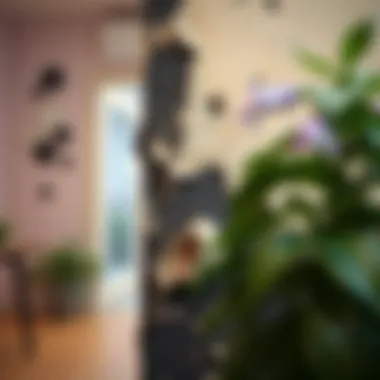
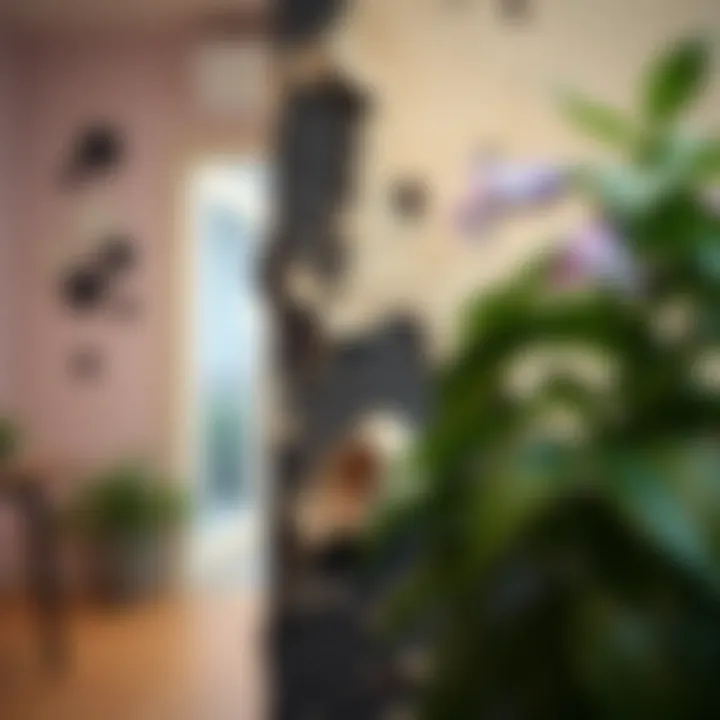
Baking soda is another popular ingredient for DIY mold removal. Often used in combination with other elements, it not only combats mold but also helps deodorize the area. Its gentle abrasive quality can also make it useful for scrubbing surfaces while still eliminating mold, emphasizing its dual role.
- Pros: It is widely available and safe for children and pets.
- Cons: Its effectiveness can be hit or miss, particularly against stubborn infestations, necessitating regular treatments.
Hydrogen Peroxide Mixes
Hydrogen peroxide is a powerful yet safe option for amateur mold-killers. This compound not only kills mold on contact but also provides disinfectant properties. This can be especially useful in kitchens or bathrooms where mold may be present in higher concentrations.
- Pros: It is color-safe and less likely to cause damage to furniture or walls compared to harsher chemicals.
- Cons: Its potency diminishes quickly upon exposure to light, so it should be stored properly and used soon after mixing for optimal effectiveness.
Application Techniques
When it comes to tackling black mold, effective application techniques serve as the backbone of any eradication plan. Proper application ensures that the solutions used reach the mold effectively, allowing homeowners to breathe a little easier knowing they’ve targeted the problem correctly. This section will provide an in-depth look at how to prepare the area, the right methodology for spraying, and what to keep an eye on after treatment.
Preparing the Area
Before diving into the spraying process, getting the area ready is essential. Clutter can hide mold growth, so clear out any furniture or items from the vicinity. This not only improves access but also prevents any contamination of belongings during treatment. If possible, wear protective gear such as gloves, goggles, and a mask to safeguard against spores that may become airborne during the cleaning process.
A well-prepared space also includes inspectin for any moisture source. Finding leaks, damp spots, or condensation will help prevent the mold from returning after treatment. It’s an aha moment when one realizes that addressing the source of moisture is as important as applying any cleaning solution.
Methodology for Spraying
Spraying might seem like a straightforward task, but there’s an art to doing it effectively. First, one must consider spray distance.
Spray Distance
Spray distance refers to how far away the nozzle is from the target surface while applying the solution. Maintaining a distance of about 6-12 inches is commonly recommended. This distance allows the product to spread evenly without being too concentrated on one spot. Over-spraying too closely may lead to dripping, which can cause other issues like staining or lead to further moisture problems.
When choosing spray distance, remember that consistency is key. A consistent distance ensures that every inch is treated evenly, maximizing the effectiveness of the application. Striking a balance is the way to go, as too far can lead to ineffective application, while being too close can cause undesirable side effects.
Coverage Strategies
Now that you've set the distance, let’s consider how to effectively cover the area.
Coverage strategies involve planning the sweep of your spray. For example, spraying in a methodical back-and-forth motion generally yields better coverage than random spraying. It’s crucial to overlap each pass slightly to ensure no spots are left out, which can harbor future growth.
By systematically moving through the area, one can also gauge where more product might be needed. Moreover, using different nozzles on your sprayer can help adjust the coverage based on the area being treated, providing versatility.
Post-Treatment Maintenance
Once you've done the heavy lifting of spraying, the journey isn’t over yet. Continuous vigilance is necessary to ensure the mold doesn’t make a return.
Monitoring for Recurrence
Monitoring for recurrence is vital in the fight against black mold. After treatment, it’s essential to keep an eye on the previously infested areas. Check for dampness, musty odors, or any visible signs of mold surfacing again. Setting a schedule for regular inspections, say every few weeks, can help catch any early signs of reemergence.
Being proactive means you're already one step ahead, and it may save a considerable amount of effort and resources down the line. Don't underestimate the power of vigilance; it could make all the difference.
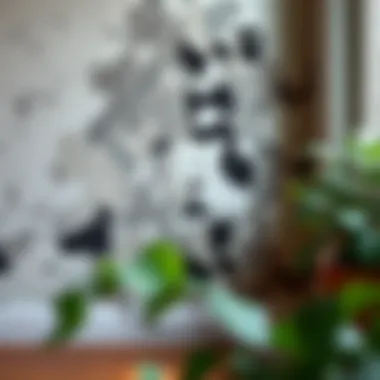
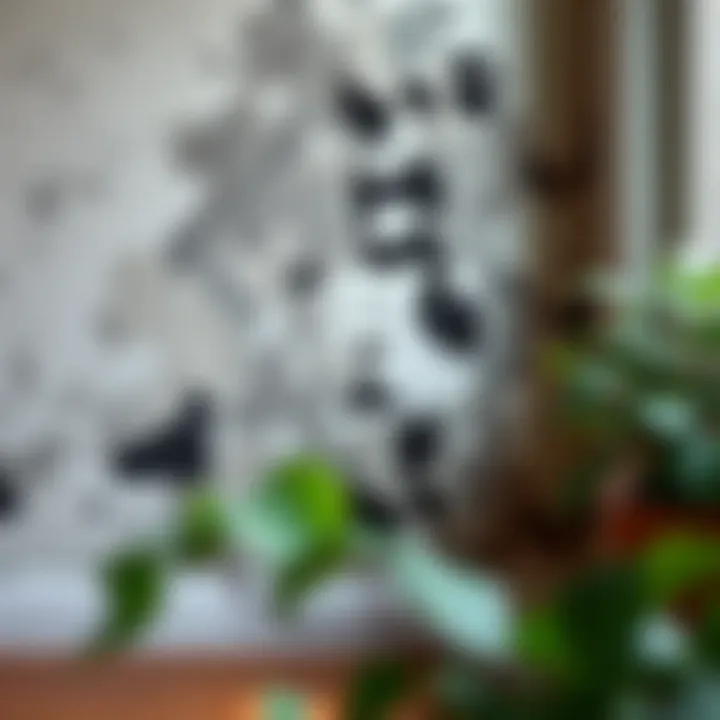
Cleaning and Restoration Tips
With proper treatment, you may find that bits of residue still cling to surfaces. Cleaning and restoration are about ensuring that the area looks as good as new and is free of unwanted spores. A gentle scrub using soap and water can often do wonders to remove any leftover mold stains. After cleaning, ensure to dry the area thoroughly, as moisture can be a sneaky friend to mold.
If a deeper clean is necessary, consider using a mixture of water and white vinegar, a natural deterring agent. However, remember that the area must be well-ventilated during this cleaning process.
"Don’t just treat - sustain. Precaution today can prevent resurgence tomorrow."
In summary, the application techniques for eliminating black mold play a critical role in not just immediate removal, but also in long-term management of mold growth. From preparation to methodical application and diligent follow-up, each step informs the overall effectiveness of a mold treatment strategy.
Preventative Measures
Taking proactive steps to prevent black mold growth is not just a smart choice; it’s essential for maintaining a healthy living environment. Mold thrives in damp, warm conditions, so understanding the underlying factors that contribute to its growth can make all the difference. By focusing on effective preventative measures, homeowners can avoid the more dire consequences of mold infestations, both in terms of property damage and health issues.
Controlling Moisture Levels
At the heart of mold prevention lies moisture control. If this aspect is neglected, even the most fabulous homes can turn into unwelcome breeding grounds for black mold. Here are some critical strategies to stave off excess moisture in your areas:
- Check for Leaks: Regularly inspect your home’s plumbing—be it under sinks, around water heaters, or in the basement. Leaks can lead to puddles that spell trouble. Just a drop here and there adds up over time.
- Seal Windows and Doors: Drafts not only make heating and cooling less efficient; they can let in moisture. Ensure that all windows and doors are well-sealed.
- Use a Dehumidifier: These handy devices actively remove excess moisture from the air, making it tougher for mold spores to settle down. Consider keeping one running in particularly humid areas like basements and laundry rooms.
- Monitor Humidity Levels: Aim to keep humidity levels between 30-50%. Using a hygrometer allows you to keep tabs on your indoor humidity, ensuring it stays within a manageable range.
Controlling moisture also means being mindful of your household activities—like cooking and showering. Using exhaust fans while cooking or taking a hot bath helps keep moisture levels in check.
Ventilation and Airflow
Another vital aspect of prevention is ensuring good ventilation throughout your home. When air circulation suffers, stale air and humidity can linger, paving the way for mold to make itself at home. Implementing these strategies can promote proper airflow:
- Open Windows: On dry days, allow fresh air to circulate, especially in bathrooms and kitchens. Letting in a breeze does wonders for reducing humidity.
- Install Air Vents and Fans: Strategically placed vents can direct airflow where it’s needed most. Ceiling fans and portable fans are great allies when it comes to keeping air moving.
- Use HVAC Systems Wisely: Ensure that heating and cooling systems are in good condition and have regular maintenance. An efficient system not only regulates temperature but also helps with moisture control.
- Maintain Attics and Crawl Spaces: Often overlooked, these spaces should be well-ventilated. Consider installing vents if needed, and avoid storing items that can trap moisture in there.
Remember, proper ventilation isn’t just about eliminating existing mold; it’s about creating an environment where mold can’t thrive. Like keeping your garden tidy, regular upkeep ensures the best chances against future infestations.
"An ounce of prevention is worth a pound of cure."
By incorporating these preventative measures into your routine, the hassle of eradicating black mold can potentially be avoided altogether. Keeping moisture levels in check and ensuring proper airflow equips homeowners with the right tools to safeguard their living spaces and promote a healthier home environment.
For more insights on mold prevention, delve into resources like CDC on Mold and EPA Mold Guidelines.
Culmination
Recap of Effective Solutions
To summarize, our journey through the effective solutions returns to a few key points:
- Understanding Black Mold: Recognizing what black mold is and the potential health risks associated with it is the first critical step. Knowledge empowers action.
- Identifying Infestations: Being alert to signs of mold presence using simple, yet effective inspection methods can prevent escalation.
- Spray Solutions: Whether opting for commercial products packed with powerful spores terminators or using homemade mixtures like vinegar or hydrogen peroxide, each approach has its unique merits and drawbacks.
- Application Techniques: Properly preparing the affected area and following an efficient spraying methodology ensures maximum effectiveness of chosen solutions.
- Preventative Measures: Managing moisture levels and improving ventilation create an environment inhospitable to mold growth.
By leveraging these solutions, homeowners can claim their spaces back from mold and foster a healthier atmosphere for all.
Final Recommendations for Homeowners
For those faced with the challenge of black mold, the following recommendations can help guide your approach:
- Proactive Monitoring: After treatment, consistently keep an eye on areas previously affected. Mold can reappear if conditions are right.
- Educate Residents: Everyone in the household should understand mold precursors. Instilling awareness can prevent future outbreaks.
- Hygiene Practices: Encourage regular cleaning routines—especially in moist environments like bathrooms and kitchens—to stave off mold resurgence.
- Seek Professional Help: If mold problems worsen or are extensive, don’t hesitate to consult professionals specializing in remediation. Sometimes, a little expert aid goes a long way.
- Invest in Quality Products: If you opt for commercial mold removers, invest in reputable brands with proven effectiveness. Research ensures safety and efficacy.
Ultimately, managing black mold is not just about removal; the key lies in maintenance and prevention. By following the insights laid out in this article, homeowners can create a safer, healthier living space, free from the grasp of black mold.







